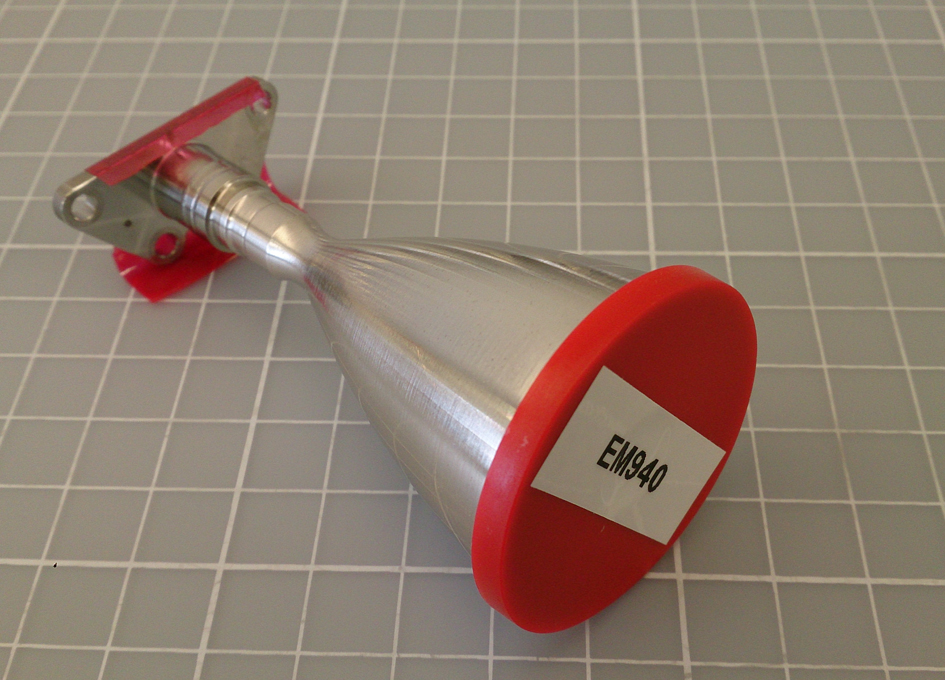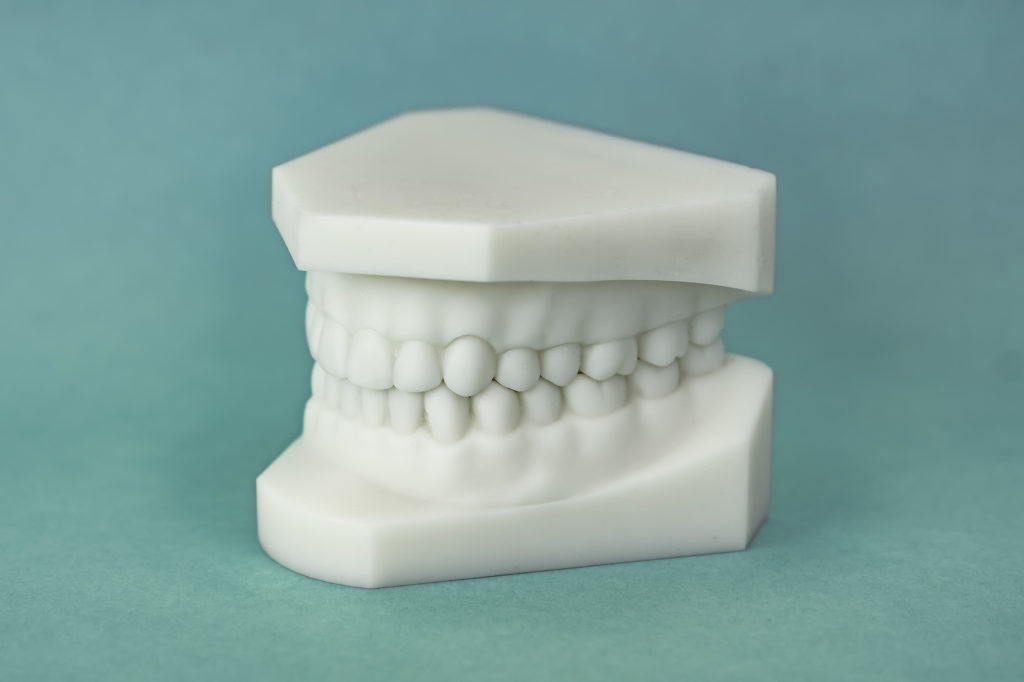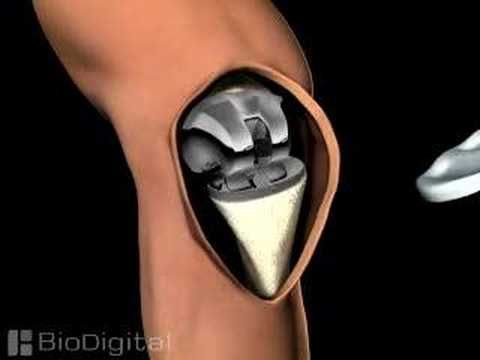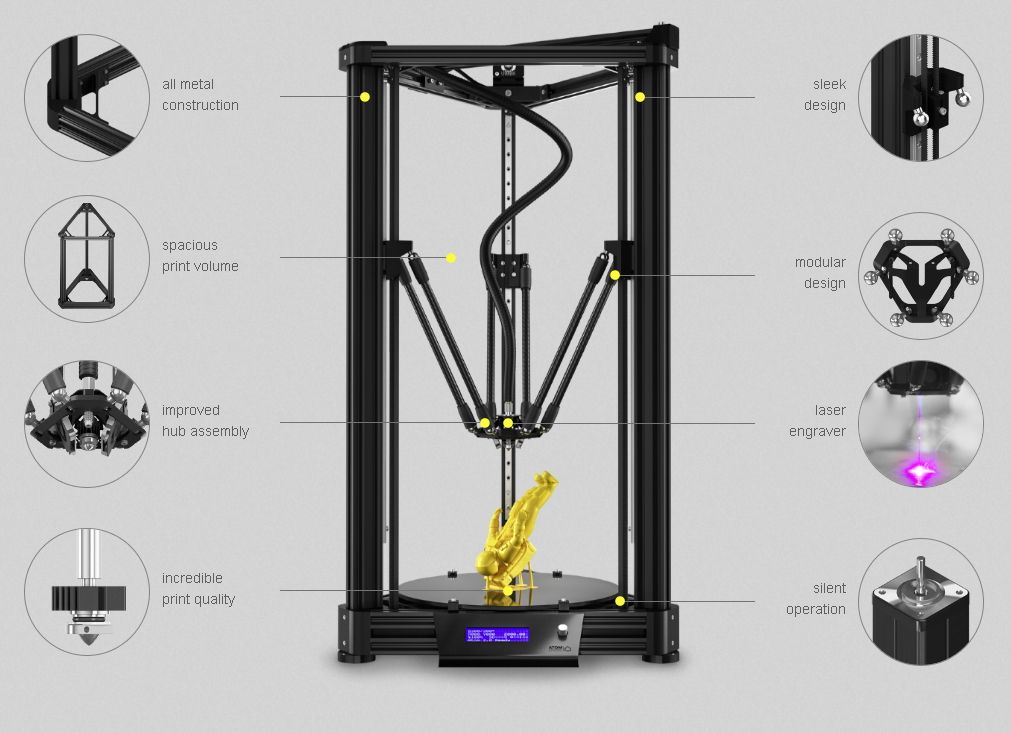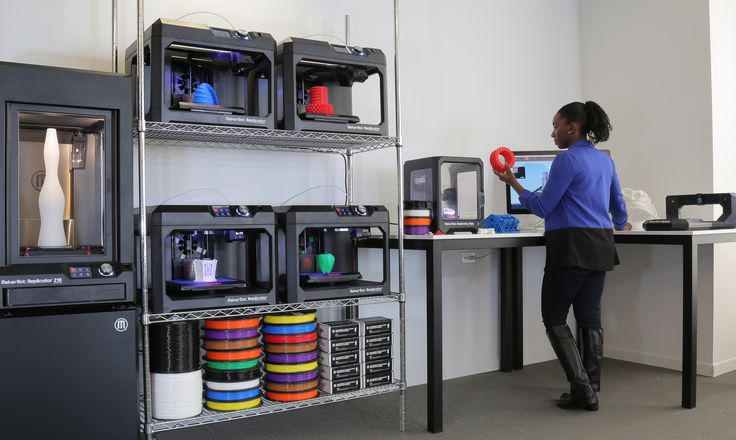3D printer metall
The Metal X 3D Printing System
An accessible end-to-end metal 3D printing solution for functional metal parts, next-day.
Request a Quote
The Metal X System is an accessible way to fabricate complex metal parts in a wide variety of advanced metals.
Simple, Yet Powerful
The Metal X is one of the most intuitive metal 3D printers available today. Print a wide range of materials from stainless steels to copper with minimal training on a closed workflow. Scaling up capacity is easy; just add printers.
Safe and Affordable
The Metal X is designed to be safe to use and accessible for all fabricators. It costs several times less than DMLS metal 3D printing systems and requires no dedicated operator, no powder management system, and minimal PPE.
Quality Parts, Fast
The Metal X is purpose-built for consistent part quality and a seamless user experience. Markforged combines superb software, materials research, and an advanced motion system to deliver industrial-grade parts quickly and reliably.
Specs
From design to fully functional
metal parts in as few as 28 hours.
Physical Dimensions
| Width | 575 mm |
| Depth | 467 mm |
| Height | 1120 mm |
| Weight | 75 kg / 165 lbs |
Build Volume
| Width | 300 mm |
| Depth | 220 mm |
| Height | 180 mm |
Printer primary Specs
- Printing Process
- Metal FFF
- Z Layer Resolution
- 50 μm - 125 μm (Post-Sinter)
- Printing Media
- Bound Powder Filament
- Internal Part Geometry
- Closed Cell Infill (Triangular) or Solid Parts
- Print Bed
- Heated, Auto Leveling, Replaceable Print Sheets
Wash & Sinter
Wash-1
- External Dimensions:
- 609 x 685 x 1,067 mm
- Weight:
- 136 kg (300 lbs)
- Washing Time:
- 12-72 hrs typical
- Solvent:
- Opteon SF-79
- Working Volume:
- 356 x 254 x 203 mm
Sinter-2
- External Dimensions:
- 1,200 x 700 x 1,500 mm
- Weight:
- 350 kg (772 lbs)
- Run Time:
- 17-31 hours
- Sintering Volume:
- 18,356 cu cm
- Peak Internal Temp.
 :
: - 1,300° C / 2,372° F
Materials
Compatible Materials
- Release Material
- Ceramic — Becomes Powder During Sintering Process
- Media (Spools)
- Bound Powder Metal Filament
System Details
Metal X PrinterThe Markforged Metal X is a new kind of metal printer. By printing metal powder bound in a plastic matrix, Markforged has eliminated many of the safety risks associated with traditional metal 3D printers. That means no loose powder, no lasers, and none of the traditional safety precautions. It’s safe to use in a shop environment with minimal facility upgrades.
In practice, the Metal X is essentially a very advanced FFF 3D printer.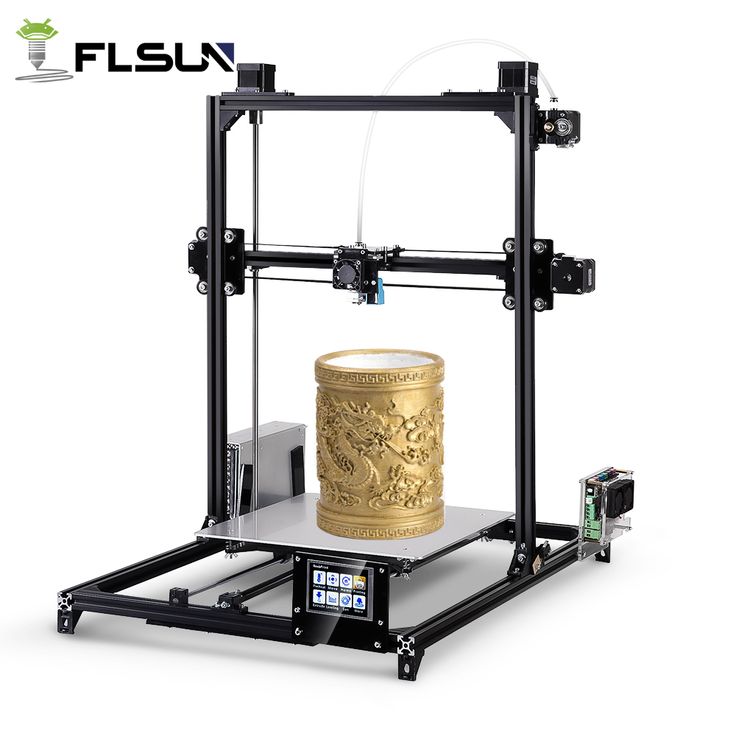 Featuring a precision machined gantry, a heated chamber and print bed, and advanced extrusion hardware, the Metal X is equipped to reliably print you durable parts. It is intentionally designed, with wear components and consumables — including print sheets, nozzles, and brushes — accessible and trivial to swap.
Featuring a precision machined gantry, a heated chamber and print bed, and advanced extrusion hardware, the Metal X is equipped to reliably print you durable parts. It is intentionally designed, with wear components and consumables — including print sheets, nozzles, and brushes — accessible and trivial to swap.
The Wash-1 is a solvent-based debinding system. It primarily uses Opteon SF-79, a high-performance fluid designed to offer superior cleaning power, higher efficiency, and safety in an environmentally sustainable way — Opteon SF-80 or Tergo Metal Cleaning Fluid can be substituted if needed.
The Wash-1 operates with simple ventilation and features an extremely simple user experience. It’s been tested and verified as a shop-safe system.
Sinter-2 and Sinter-1The Markforged Sinter-2 and Sinter-1 are highly optimized tube furnaces used for sintering 3D printed metal parts. They provide leading edge sintering reliability and run times and are equipped with advanced safety features. The Sinter-2 is more advanced than the Sinter-1 — featuring a larger working volume, more precise temperature control, and a mechanical door interlock.
The Sinter-2 is more advanced than the Sinter-1 — featuring a larger working volume, more precise temperature control, and a mechanical door interlock.
The Sinter-1 and Sinter-2 typically have run times between 26 and 31 hours. However, the Sinter-2 can process small parts in express mode, where it can sinter up to 250g of parts in just 17 hours.
Download Datasheet
Materials
From stainless steel to copper,
choose from a wide range of strong,
durable, and capable materials.
Metal 3D Printer – HP Metal Jet S100 3D Printing Solution
Contact an HP 3D Print expert
Choose the phone number for your country to speak to a local HP 3D Printing sales expert today.
België/Belgique
+32 78 48 44 69
Czech Republic
+420 239 050 531
Deutschland
+49 7031 986 90 13
+49 7031 986 90 17
España
+34 93 003 45 95
France
+33 6 28 78 35 59
Italia
+39 02 8295 2406
Nederland
+31 20 241 5685
Norway
+47 23 96 00 13
Österreich
+43 720 117035
+43 1424 0091
Romania
+40 376 300 174
Sweden
+46 8 446 891 49
Suisse/Switzerland
+41 44 511 2308
+41 44 511 2333
United Kingdom
+44 20 7365 8158
United States
+1 877 468 8369
Reinvent business opportunities with digitally driven industrial metal 3D printing for mass production
Watch video
Accelerate innovative
designs and products
Efficiently 3D print
metal parts at scale
Deliver top quality
3D printed metal parts
from a trusted global
industry leader
Scale growth with HP’s
flexible offering
Discover the complete HP Metal Jet S100 3D Printing Solution
Streamline your metal 3D printing workflow
Learn how this metal 3D printer solution gains efficiency from design to final part.
Software
Software
HP Metal Jet Software Solutions provide control to connected factory system solutions, focus on data flow across touchpoints, and prioritize operational uptime.
Materials
Materials
Two stainless steel powders available with process parameters that achieve MPIF 35 properties: HP Metal Jet SS 316L and HP Metal Jet SS 17-4PH.
Data courtesy3
Services
Services
HP Metal Jet Solution Services provide your business with a comprehensive suite of onboarding, maintenance, and professional services to help you achieve the most value with HP Metal Jet technology.
“The benefits I see with HP Metal Jet technology are process robustness, high machine productivity, and surface finish. Now we do consider HP’s Metal Jet technology a viable option for serial part manufacturing. We plan to leverage this technology across Schneider Electric’s lines of business to bring new added value to our products and customers.
 ”
” Guillaume Fribourg, Metallic materials & processes expert in Energy Management BU, Schneider Electric
Watch video
Data courtesy ⁴
"We see Metal Binder Jetting as the main growth driver for our Metal Additive Manufacturing division. Now, with the HP Metal Jet S100 Printing Solution, we can say AM has the possibility to enter into serial production markets."
Diego Laurent, CEO of GKN Powder Metallurgy
Watch video
Data courtesy ⁵
“By reducing the cycle time for the production of parts we can realize a higher volume of mass production very quickly. That’s why HP’s new Metal Jet platform is a huge leap forward for the industry and we look forward to raising the bar on what is possible to deliver more value and innovation for our customers.“
Dr. Martin Goede, Head of Technology Planning and Development, Volkswagen.
Watch video
Data courtesy ⁶
“HP Metal Jet represents the first truly viable 3D technology for the industrial-scale production of metal parts.
 Our customers demand extreme performance, quality, and reliability and HP’s advanced technology and heritage of market disruption give us the confidence to deliver beyond expectations.”
Our customers demand extreme performance, quality, and reliability and HP’s advanced technology and heritage of market disruption give us the confidence to deliver beyond expectations.” Rob Hall, President of Parmatech
Watch video
Data courtesy ⁷
Leverage Binder Jetting technology and HP's expertise in additive manufacturing
Why metal 3D printing?
- Innovative designs enabled for lightweight or consolidated parts, performance improvements and customization
- Improved efficiencies and economics
Why binder jetting?
- Higher productivity from layer by layer process; less post-processing and no support removal required
- Cost efficient by using metal powders from established global powder suppliers
Why HP Metal Jet 3D printing?
- HP Thermal Inkjet printhead delivers economics and part quality (surface finish and accuracy)
- Leverages IP from HP Latex and uses minimum binder agent allowing for thicker and larger mass parts
Explore new metal 3D printing applications
3D printing metal parts can help you eliminate the design constraints of analog technologies and produce innovative applications that you can mass customize and quickly deliver to market.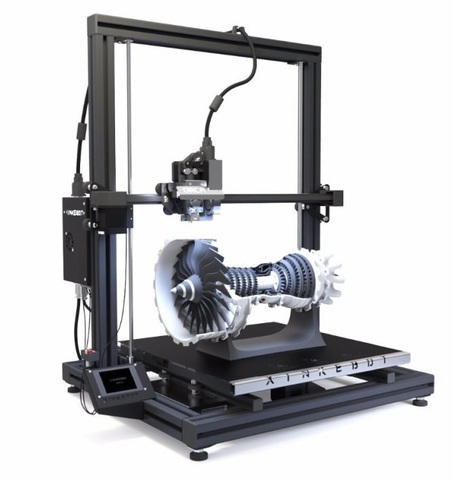
Industrial metal 3D printing applications
Data courtesy8
Air filter / 690V Circuit breakers
Company:
Schneider Electric
Benefits:
- Faster time to production
- Highly complex lattice geometry
- Cost effective serial production
- Weight reduction
- Assembly consolidation
- Ease of use
Material:
HP Metal Jet SS 316L
Data courtesy9
Digital engine component
Company:
Lumenium
Benefits:
- Highly dense near-net parts for complex applications
- Cost savings - less material waste and fewer machining steps
- Design freedom
Material:
HP Metal Jet SS 17-4PH
Fluidic manifold
Benefits:
- Design flexibility resulting in fluid/thermal transfer optimization and assembly consolidation
- Design freedom enables features impossible to manufacture using traditional techniques
Material:
HP Metal Jet SS 316L
Filter disk
Benefits:
- Porosity control for large-scale production of complex geometries
- Near-net shape porous geometries enables faster speed to market and supply chain simplification
Material:
HP Metal Jet SS 316L
Consumer goods metal 3D printing applications
Data courtesy10
KING Supersport-35 Putter
Company:
Cobra Golf
Benefits:
- Design freedom - optimal weight distribution
- Optimized performance with 3D printed body and lattice design
- Cost savings - eliminates the need for 3D printing supports and increases throughput
Material:
HP Metal Jet SS 316L
Post-processing:
Polishing, machining, PVD
Watch video
Data courtesy11
Rings and pendants
Company:
Legor
Benefits:
- Speed to market from design to production, saving additional time and costs from tooling
- New freedom to explore design spaces and create complex designs with varying sizes, shapes, thicknesses
Material:
HP Metal Jet SS 316L
Post-processing:
Polishing
Watch case
Benefits:
- Part quality – surface.
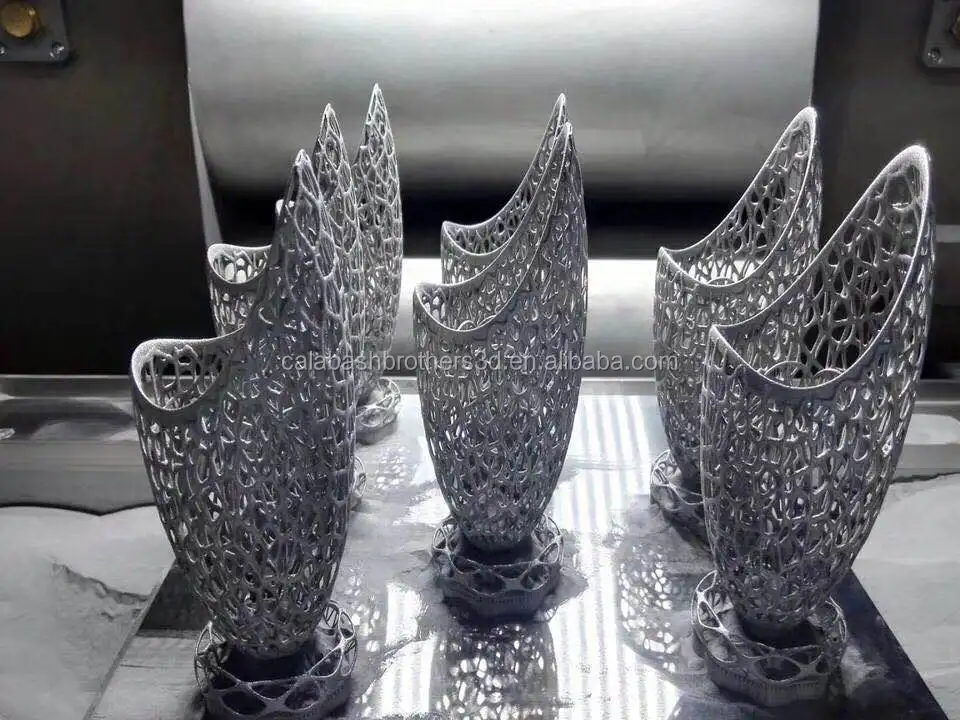 Near-net shape parts that can achieve class A1 finish after post-processing
Near-net shape parts that can achieve class A1 finish after post-processing - Cost savings – less machining and assembly steps to produce complex watch case geometries
Material:
HP Metal Jet SS 316L
Automotive metal 3D printing applications
Data courtesy12
Gearshift knob
Company:
Volkswagen group
Benefits:
- Speed to market from design to production, saving additional time and costs from tooling
- Weight reduction
- Design freedom for new features and capabilities previously not economically viable to mass produce
Material:
HP Metal Jet SS 316L
Post-processing:
Shot peening
Data courtesy12
Personalized keyfobs
Company:
Volkswagen group
Benefits:
- Speed to market from design to production, saving dditional time and costs from tooling
- Mass customization to offer more value to customers looking for unique products
Material:
HP Metal Jet SS 316L
Post-processing:
Polishing
Valve spool
Benefits:
- Complex shape and size - parts without support structures, allowing larger, more complex geometries
- Cost savings – less material waste and fewer machining steps when producing parts for large-scale production
Material:
HP Metal Jet SS 17-4PH
Post-processing:
Polishing
Metal Jet production service
14Experience HP Metal Jet quality. To order metal 3D parts, upload your design file,15 get a design compatibility check from HP, and receive your order from manufacturing partners.14
To order metal 3D parts, upload your design file,15 get a design compatibility check from HP, and receive your order from manufacturing partners.14
Order metal 3D parts
Metal 3D printing service production partners
Collaborate with metal part production leaders to help you scale your metal additive manufacturing
GKN Powder Metallurgy
The world’s leading producer of materials and products using powder metallurgy technologies.
Parmatech
World leader in metal injection molding, specializing in producing low-cost, high-volume metal parts for the medical and industrial sectors.
Any questions?
Reach out to a metal 3D printing expert!
Disclaimers
To achieve 4 times nozzle redundancy, nozzles are aligned so that four nozzles print the same 1/1200-inch dot row in the powder bed. This means up to four different nozzles can print HP Metal Jet binding agent in the same 1200 dpi grid point, helping to suppress defects.
 For more information, see https://www.hp.com/metaljet-whitepaper.
For more information, see https://www.hp.com/metaljet-whitepaper.Powder removal involves a mix of automated and manual processes, where trace amounts of loose powder may be lost.
Data courtesy of Lumenium.
Data courtesy of Schneider Electric.
Data courtesy of GKN Powder Metallurgy.
Data courtesy of Volkswagen.
Data courtesy of Parmatech.
Data courtesy of Schneider Electric.
Data courtesy of Lumenium.
Data courtesy of Cobra Golf.
Data courtesy of Legor.
Data courtesy of Volkswagen.
Subscription offering only available in US and selected countries in Europe. Please contact us for more information.
HP does not provide manufacturing services. Customers work directly with and pay for manufacturing services provided by a trusted third-party manufacturing partner responsible for fulfilling the order.
 HP provides design compatibility check for HP Metal Jet printing. Metal Jet Production Service is available in the US and Western Europe.
HP provides design compatibility check for HP Metal Jet printing. Metal Jet Production Service is available in the US and Western Europe.We currently accept OBJ, STL, 3MF, X_T (Parasolid), STEP, and IGES files.
Pendant
Data courtesy11
HP Metal Jet SS 316L - extreme resistance to corrosion and high temperatures
A non-magnetic austenite stainless steel used in applications requiring extremely high corrosion resistance, excellent elongation, ductility, and strength at elevated temperatures. The high alloy and low carbon content makes it a great fit for automotive, aerospace, medical, jewelry, and oil/chemical industries.
Digital engine component
Data courtesy3
HP Metal Jet SS 17-4PH - high strength and wear resistance
A martensite precipitation hardening stainless steel used in applications that require a combination of high strength and mechanical properties with good corrosion and wear resistance. Properties can be tailored through heat treatment, making this versatile material valuable for a wide use of applications in the medical, aerospace, marine, food processing, and automotive industries.
Properties can be tailored through heat treatment, making this versatile material valuable for a wide use of applications in the medical, aerospace, marine, food processing, and automotive industries.
HP Metal Jet Onboarding Services
Launch and scale your HP Metal Jet S100 3D Printing Solution with installation and training onboarding services designed to quickly and efficiently get your team, equipment, and site up and running.
HP Metal Jet Maintenance Services
Maximize your overall equipment effectiveness (OEE) with proactive, preventive, and responsive HP Metal Jet Maintenance Services tailored to your operational needs.
HP Metal Jet Professional Services
Optimize and accelerate your application designs as well as process and new material development efforts with HP Metal Jet Professional Services customized to help you achieve your desired part quality and production outcomes.
HP Metal Jet Command Center
Client/server application for system setup, registration, device monitoring, and connectivity management.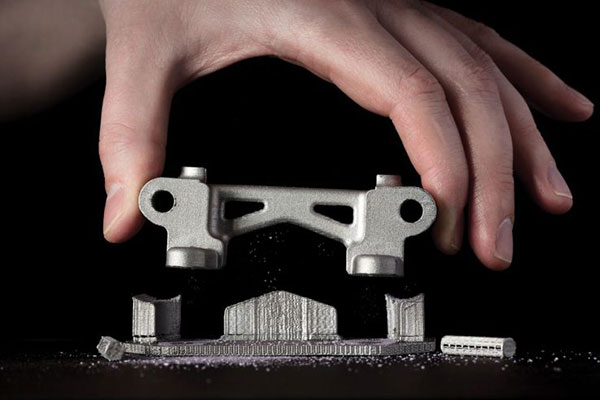
HP Metal Jet API
Application Programming Interface (API) for streamlined access to device data and device orchestration for process development and production workflow management.
HP Metal Jet Process Development Suite
Integrated build management, process parameter editing, sintering simulation, and process monitoring reduce time and effort in process development.
How metal 3D printers work. Overview of SLM and DMLS technologies. additive manufacturing. 3D metal printing.
Metal 3D printing. Additive technologies.
SLM or DMLS: what's the difference?
Hello everyone, Friends! 3DTool is with you!
BLT metal 3D printer catalog
Selective laser melting ( SLM ) and direct metal laser sintering ( DMLS ) are two additive manufacturing processes that belong to the family of 3D printing using the powder layer method.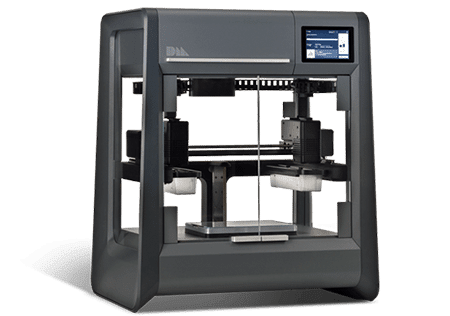 The two technologies have much in common: they both use a laser to selectively melt (or melt) metal powder particles, bonding them together and creating a pattern layer by layer. In addition, the materials used in both processes are metals in granular form.
The two technologies have much in common: they both use a laser to selectively melt (or melt) metal powder particles, bonding them together and creating a pattern layer by layer. In addition, the materials used in both processes are metals in granular form.
The differences between SLM and DMLS come down to the basics of the particle bonding process: SLM uses metal powders with a single melting point and completely melts the particles, while in DMLS the powder consists of materials with variable melting points. nine0014
Specifically:
SLM produces single metal parts while DMLS produces metal alloy parts.
Both SLM and DMLS technologies are used in industry to create final engineering products.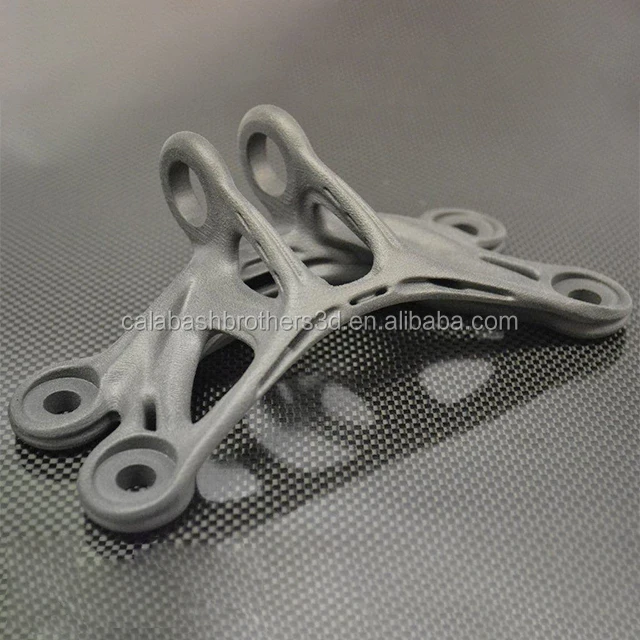 In this article, we will use the term "metal 3D printing" to summarize the 2 technologies. We will also describe the main mechanisms of the manufacturing process that are necessary for engineers to understand the advantages and disadvantages of these technologies. nine0002 There are other manufacturing processes for producing dense metal parts, such as electron beam melting (EBM) and ultrasonic additive manufacturing (UAM). Their availability and distribution is rather limited, so they will not be presented in this article.
In this article, we will use the term "metal 3D printing" to summarize the 2 technologies. We will also describe the main mechanisms of the manufacturing process that are necessary for engineers to understand the advantages and disadvantages of these technologies. nine0002 There are other manufacturing processes for producing dense metal parts, such as electron beam melting (EBM) and ultrasonic additive manufacturing (UAM). Their availability and distribution is rather limited, so they will not be presented in this article.
How 3D printing with SLM or DMLS metal works.
How does metal 3D printing work? The basic manufacturing process for SLM and DMLS is very similar.
1. The printing chamber is first filled with an inert gas (such as argon) to minimize the oxidation of the metal powder. It then heats up to the optimum operating temperature. nine0002 2. A layer of powder is spread over the platform, a powerful laser makes passes along a predetermined path in the program, fusing the metal particles together and creating the next layer.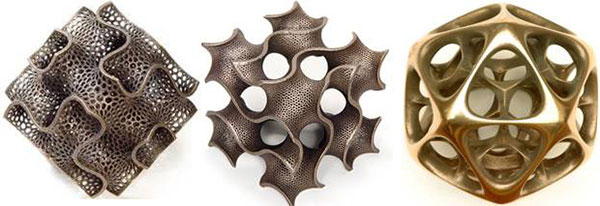
3. When the sintering process is completed, the platform moves down 1 layer. Next, another thin layer of metal powder is applied. The process is repeated until the entire model is printed.
When the printing process is completed, the metal powder already has strong bonds in the structure. Unlike the SLS process, parts are attached to the platform via support structures. The support in metal 3D printing is created from the same material as the base part. This condition is necessary to reduce deformations that may occur due to high processing temperatures. nine0002 When the 3D printer's chamber cools down to room temperature, excess powder is removed manually, such as with a brush. The parts are then typically heat treated while they are still attached to the platform. This is done to relieve any residual stresses.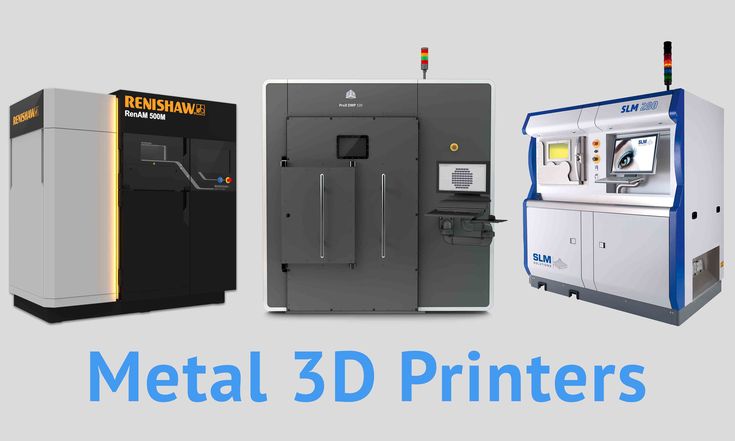 They can then be further processed. The removal of the part from the platform occurs by means of sawing.
They can then be further processed. The removal of the part from the platform occurs by means of sawing.
Scheme of operation of a 3D printer for metal.
In SLM and DMLS, almost all process parameters are set by the manufacturer. The layer height used in metal 3D printing varies from 20 to 50 microns and depends on the properties of the metal powder (fluidity, particle size distribution, shape, etc.). nine0002 The basic size of the print area on metal 3D printers is 200 x 150 x 150 mm, but there are also larger sizes of the working area. Printing accuracy is from 50 - 100 microns. As of 2020, metal 3D printers start at $150,000. For example, our company offers 3D metal printers from BLT.
metal 3D printers can be used for small batch production, but the 3D printing capabilities of such systems are more like those of mass production on FDM or SLA machines. nine0002 The metal powder in SLM and DMLS is recyclable: typically less than 5% is consumed. After each impression, the unused powder is collected and sieved, and then topped up with fresh material to the level required for the next production.
After each impression, the unused powder is collected and sieved, and then topped up with fresh material to the level required for the next production.
Waste in metal printing, are supports (support structures, without which it will not be possible to achieve a successful result). With too much support on the manufactured parts, the cost of the entire production will increase accordingly. nine0002
Adhesion between coats.
3D metal printing on BLT 3D printers
SLM and DMLS metal parts have almost isotropic mechanical and thermal properties. They are hard and have very little internal porosity (less than 0.2% in 3D printed condition and virtually non-existent after processing).
Metal printed parts have higher strength and hardness and are often more flexible than traditionally made parts. However, such metal becomes “tired” faster. nine0014
3D model support structure and part orientation on the work platform.

Support structures are always required when printing with metal, due to the very high processing temperatures. They are usually built using a lattice pattern.
Supports in metal 3D printing perform 3 functions:
• They form the basis for creating the first layer of the part.
• They secure the part to the platform and prevent it from deforming.
• They act as a heat sink, removing heat from the model. nine0014
Parts are often oriented at an angle. However, this will increase the amount of support required, the printing time, and ultimately the overall cost.
Deformation can also be minimized with laser sintering templates. This strategy prevents the accumulation of residual stresses in any particular direction and adds a characteristic surface texture to the part.
Since the cost of metal printing is very high, software simulations are often used to predict how a part will behave during processing. These topology optimization algorithms are otherwise used not only to increase mechanical performance and create lightweight parts, but also to minimize the need for supports and the likelihood of part distortion. nine0014
These topology optimization algorithms are otherwise used not only to increase mechanical performance and create lightweight parts, but also to minimize the need for supports and the likelihood of part distortion. nine0014
Hollow sections and lightweight structures.
An example of printing on a BLT 3D printer
Unlike polymer powder melt processes such as SLS, large hollow sections are not typically used in metal printing as the support would be very difficult to remove, if at all possible.
For internal channels larger than Ø 8 mm, it is recommended to use diamond or teardrop cross-sections instead of round ones, as they do not require support. More detailed recommendations on the design of SLM and DMLS can be found in other articles on this topic. nine0014
As an alternative to hollow sections, parts can be made with sheath and cores, which in turn are machined using different laser power and pass speeds, resulting in different material properties.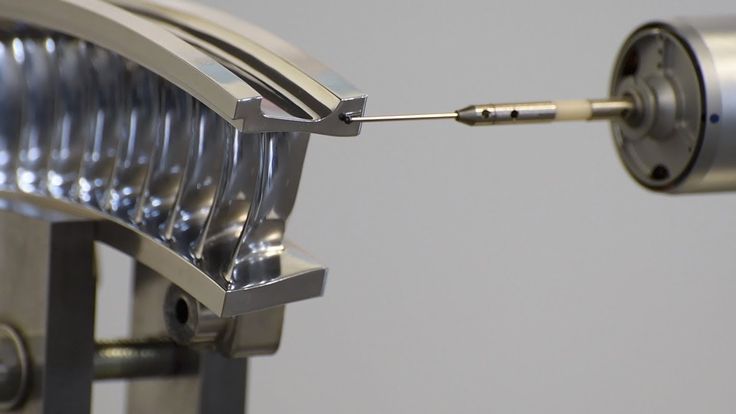 The use of sheath and cores is very useful when making parts with a large solid section, as it greatly reduces printing time and reduces the chance of warping.
The use of sheath and cores is very useful when making parts with a large solid section, as it greatly reduces printing time and reduces the chance of warping.
The use of a lattice structure is a common strategy in metal 3D printing to reduce part weight. Topology optimization algorithms can also help design organic lightweight shapes. nine0014
Consumables for 3D metal printing.
SLM and DMLS technologies can produce parts from a wide range of metals and metal alloys, including aluminum, stainless steel, titanium, cobalt, chromium and inconel. These materials meet the needs of most industrial applications, from aerospace to medical applications. Precious metals such as gold, platinum, palladium and silver can also be processed, but their use is of a minor nature and is mainly limited to jewelry making. nine0014
The cost of metal powder is very high. For example, a kilogram of 316 stainless steel powder costs approximately $350-$450. For this reason, minimizing part volume and the need for supports is key to maintaining optimal manufacturing cost.
For this reason, minimizing part volume and the need for supports is key to maintaining optimal manufacturing cost.
The main advantage of metal 3D printing is its compatibility with high-strength materials such as nickel or cobalt-chromium superalloys, which are very difficult to machine with traditional methods. Significant cost and time savings can be achieved by using metal 3D printing to create a near-clean shape part. Subsequently, such a part can be processed to a very high surface quality. nine0002
Metal post-processing.
Various post methods. treatments are used to improve the mechanical properties, accuracy and appearance of metal printed products.
Mandatory post-processing steps include the removal of loose powder and support structures, while heat treatment (heat annealing) is typically used to relieve residual stresses and improve the mechanical properties of the part.
CNC machining can be used for critical features (such as holes or threads).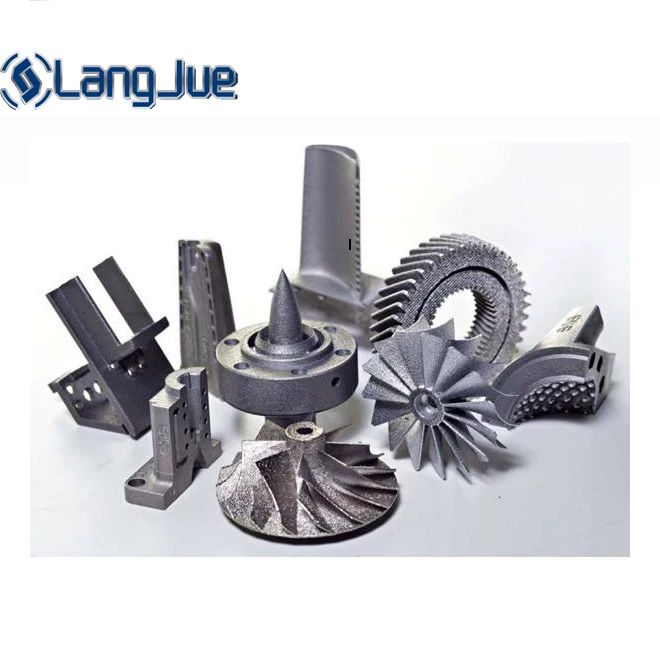 Sandblasting, plating, polishing, and micro-machining can improve the surface quality and fatigue strength of a metal printed part. nine0014
Sandblasting, plating, polishing, and micro-machining can improve the surface quality and fatigue strength of a metal printed part. nine0014
Advantages and disadvantages of metal 3D printing.
Pros:
1. Metal 3D printing can be used to make complex custom parts, with geometries that traditional manufacturing methods cannot provide.
2. Metal 3D printed parts can be optimized to increase their performance with minimal weight.
3. Metal 3D printed parts have excellent physical properties, metal 3D printers can print a wide range of metals and alloys. Includes difficult-to-machine materials and metal superalloys. nine0014
Cons:
1. Manufacturing costs associated with metal 3D printing are high. The cost of consumables is from $ 500 per 1 kg.
2. The size of the working area in metal 3D printers is limited.
Conclusions.
• Metal 3D printing is most suitable for complex, one-piece parts that are difficult or very expensive to manufacture using traditional methods, such as CNC.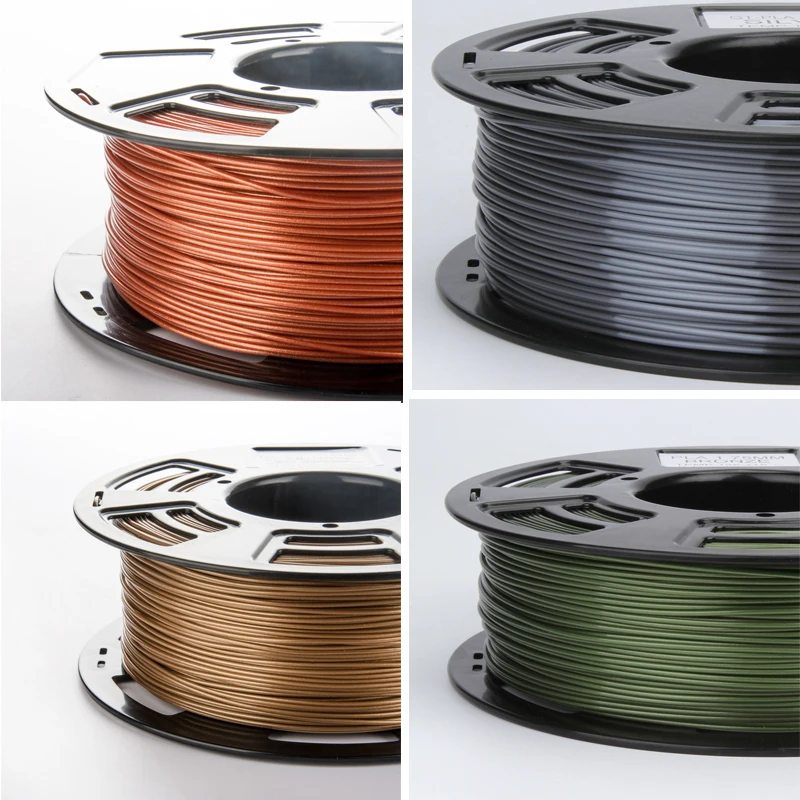
• Reducing the need for building supports, will significantly reduce the cost of printing with metal. nine0002 • 3D printed metal parts have excellent mechanical properties and can be made from a wide range of engineering materials, including superalloys.
And that's all we have! We hope the article was useful to you.
Catalog of 3D printers for metal BLT
You can purchase metal 3d printers, as well as any other 3d printers and CNC machines, by contacting us:
• By email: [email protected]
• By phone: 8(800)775-86-69
• Or on our website: http://3dtool.ru
Also, don't forget to subscribe to our YouTube channel:
Subscribe to our groups in social networks:
In contact with
Precision 3D metal printing on order in Sprint 3D
Metal 3D printing - additive manufacturing of metal products, which is rightfully one of the most promising and rapidly developing areas in 3D printing as such. The technology itself originates from the conventional sintering of materials used in powder metallurgy. But now it has become more perfect, accurate and fast. And today SPRINT3D offers you metal printing on 3 D printer on really favorable terms. But first, a little information about the production process itself and its capabilities.
The technology itself originates from the conventional sintering of materials used in powder metallurgy. But now it has become more perfect, accurate and fast. And today SPRINT3D offers you metal printing on 3 D printer on really favorable terms. But first, a little information about the production process itself and its capabilities.
Selective Laser Fusion Technology
SLM or Selective Fusion Technology is a type of direct metal printing that achieves a density of 99.5%. The difference is especially noticeable when compared with models obtained by conventional casting. This indicator is achieved due to the introduction of the latest technologies in the hardware part:
- The use of special rollers for compacting powders and, as a result, the possibility of using powders with a particle size of 5 µm.
- Bulk density increase to help compact end products.
- Creates a rarefied atmosphere of inert gases, which ensures maximum purity of the material, no oxidation, and eliminates the risk of introducing third-party chemical compounds into the composition.

But most importantly, the modern 3 D Metal Printer makes it easy to customize the configuration for printing with a specific metal powder. Thus, even with inexpensive material, you can get a first-class result. But only if you use high-quality modern equipment. And here we are ready to surprise you too!
Metal 3D printing B SPRINT 3D
3D printing with own 3D printers
The largest working area is 280x280x350 mm
layer thickness up to 15 microns3D with various types of metals
Delivery throughout Russia and CIS countries
installation for 3 9020 which we use
Production quality is a key requirement that we set ourselves. Therefore, in our work we use only professional equipment with wide possibilities for metal printing. Let's take a closer look at each of the production units. nine0014
Production unit SLM 280HL
SLM 280HL is a development of the German company SLM Solutions GmbH, which uses the technology of layer-by-layer laser melting of powder metal materials.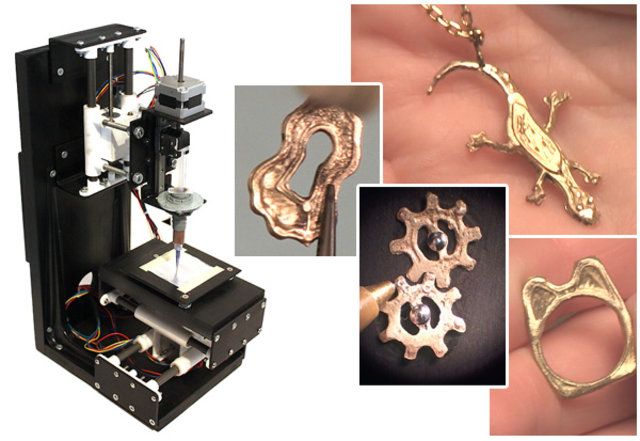 The installation is equipped with a large working chamber and allows you to create 3D objects with dimensions of 280x280x350 mm. Among the main advantages of printing with this installation are:
The installation is equipped with a large working chamber and allows you to create 3D objects with dimensions of 280x280x350 mm. Among the main advantages of printing with this installation are:
- Small minimum thickness of the applied layer - 20 microns.
- Filling the working chamber with an inert gas, which allows you to work with various reactive metals.
- Print speed up to 35 cm/hour.
- Building layer thickness – 30 and 50 µm.
- Power - 400 W.
A special highlight is the patented powder feed system, which delivers significantly faster print speeds than most production machines in the same price range. We use the following materials in production:
- Stainless steel (domestic 07X18H12M2 (Polema), 12X18H10T and imported 316L).
- Tool steel (imported 1.2709).
- Heat-resistant alloys 08KhN53BMTYu (similar to Inconel 718, produced by Polem) and EP 741 (produced by VILS).

- Cobalt Chrome (COCR)
The SLM 280HL 3D printer can be used to create all kinds of metal components, prototypes and end products. If necessary, we can provide small-scale production. nine0014
ProX 100 production unit
ProX 100 is a compact unit for 3 D metal printing, developed by the American company 3D Systems. It uses direct laser sintering technology, which ensures high speed and precision of production. Among the main characteristics it is worth highlighting:
- The size of the working chamber is 100x100x80 mm.
- Building layer thickness – 20 and 30 µm. nine0219
- Power - 50 W.
ProX 100 allows you to create prototypes that can not be developed by standard methods, provides short lead times, guarantees the absence of material porosity and high part density. In addition, we note the standardized quality of all products, regardless of their structure. At the moment, the model is actively used in dentistry when creating high-precision prostheses, but has found wide application in other industries:
At the moment, the model is actively used in dentistry when creating high-precision prostheses, but has found wide application in other industries:
- Manufacture of engines and their individual parts.
- Development of medical equipment.
- Printing jewelry and even contemporary art.
In printing, we use an alloy of cobalt-chromium KX28M6 (manufactured by Polem), originally developed for additive technologies when creating endoprostheses.
Metal 3D printing - current application
Many experts argue that 3D printing as such has not yet fully revealed its potential. For example, Elon Musk plans to use technology in the colonization of Mars to build administrative and residential buildings, equipment and machinery right on the spot. And this is quite real, because 3D metal printing technology is already actively used in various industries:
- The high precision of production and relatively affordable price have made 3D printing very relevant in this industry.





